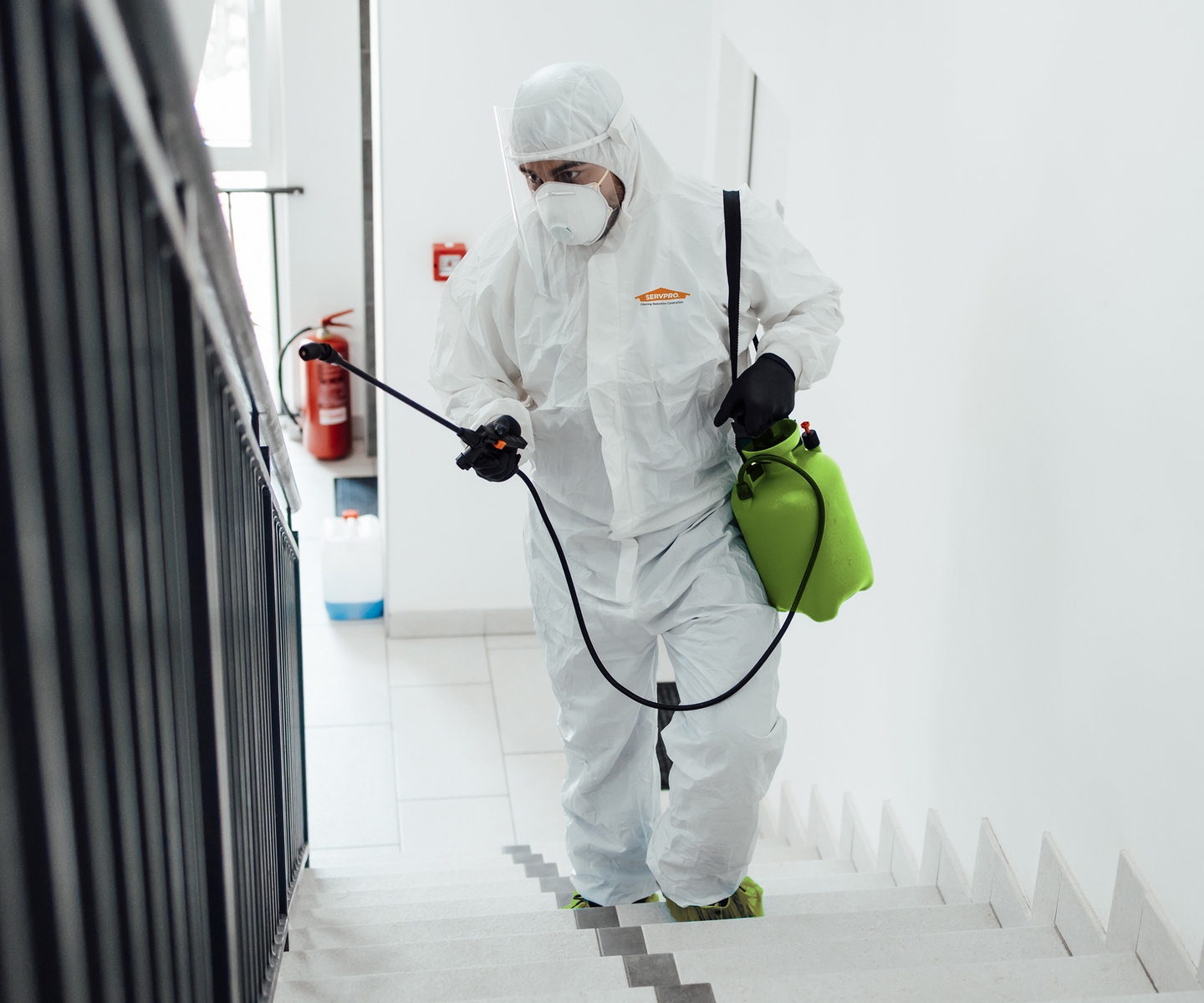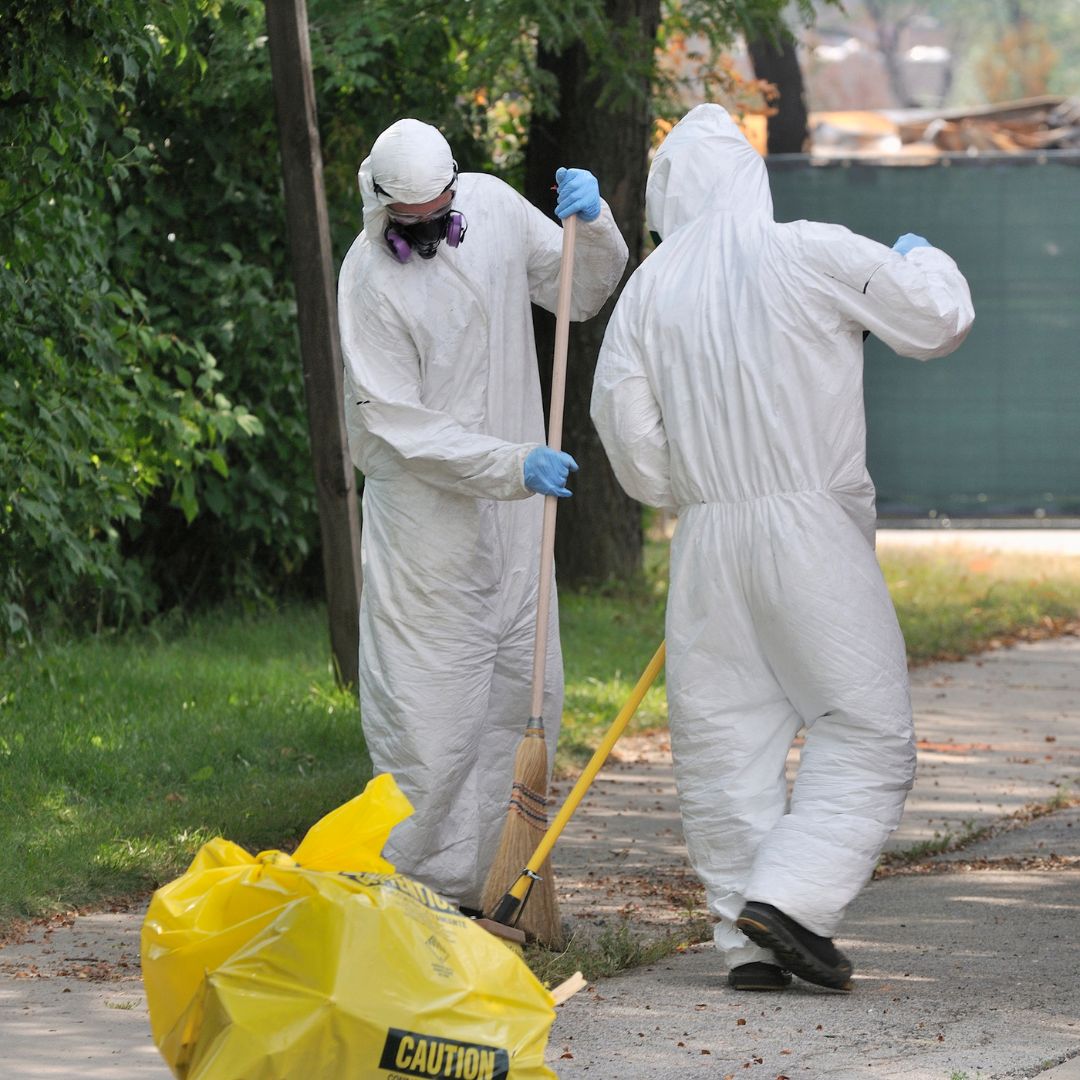Flood Damage Restoration: Quick and Reliable Recuperation for Your Home
Wiki Article
Expert Biohazard Cleaning and Purification for Blood, Bodily Fluids, and Hazardous Materials
The prospective wellness risks linked with exposure to biohazards highlight the critical requirement for meticulous handling and extensive cleaning. As we navigate the detailed landscape of biohazard cleanup, comprehending the subtleties of policies, conformity, and the specialized devices at play comes to be necessary in guaranteeing a comprehensive and secure purification process.
Health And Wellness Threats of Biohazard Exposure
Direct exposure to biohazards postures significant health and wellness threats that can result in serious repercussions for people and areas alike. Biohazards incorporate a wide variety of organic materials, including blood, bodily liquids, mold, microorganisms, viruses, and other potentially transmittable materials. When individuals come right into call with these biohazards, whether via crashes, improper handling, or environmental exposure, they face the risk of contracting major diseases or illness.Among the main wellness threats related to biohazard direct exposure is the transmission of transmittable conditions. Bloodborne microorganisms such as HIV, hepatitis B and C, and various bacteria can be existing in biohazardous products, posing a straight threat to human health and wellness. Inhaling airborne biohazards like mold spores or entering call with infected surfaces can likewise lead to respiratory issues, allergies, and other unfavorable health effects.
In addition, biohazard direct exposure can have long-term health effects, with some conditions manifesting years after the first call (Blood Cleanup). Consequently, it is essential to prioritize proper biohazard cleansing and decontamination to mitigate these wellness dangers and guarantee the safety of people and neighborhoods

Specialized Training for Biohazard Cleaning
When it concerns taking care of biohazard cleanup effectively and securely, specialized training plays a fundamental function in ensuring appropriate purification treatments are followed. Biohazard clean-up calls for specific understanding and abilities to effectively reduce dangers linked with bloodborne pathogens, bodily fluids, and unsafe materials. Experts learnt biohazard cleaning undertake rigorous instruction on exactly how to securely take care of, get rid of, and get rid of biohazardous products to protect against contamination and direct exposure.Specialized training for biohazard cleaning covers a series of important topics, including appropriate individual safety devices (PPE) use, bloodborne virus recognition, purification strategies, and hazardous waste disposal protocols. Individuals learnt biohazard cleanup are equipped with the necessary competence to examine contamination degrees, determine prospective dangers, and carry out proper clean-up procedures in compliance with regulatory standards.
Continuous training and education are paramount in the area of biohazard cleaning to remain upgraded on the current decontamination technologies, safety protocols, and regulations. By spending in specialized training, biohazard cleaning experts can efficiently react to emergency cleanup scenarios and guard both public health and wellness and the atmosphere.
Value of Proper Purification Strategies
Using appropriate decontamination strategies is vital in biohazard clean-up to effectively remove harmful materials and minimize health threats. Effective purification not only guarantees the elimination of noticeable traces of blood, bodily liquids, and various other biohazards however additionally targets unnoticeable microorganisms that might pose severe health and wellness hazards if not correctly eliminated. By following rigid purification protocols, trained experts can dramatically lower the risk of exposure to unsafe microbes, infections, and microorganisms that could cause diseases or navigate to this website infections.Appropriate purification strategies involve the usage of specific equipment and anti-bacterials that are specifically designed to reduce the effects of biohazards efficiently. Complete cleansing and disinfection of contaminated areas are vital to protect against the spread of virus and guarantee a safe environment for occupants. Additionally, the appropriate disposal of biohazardous waste complying with decontamination treatments is essential in avoiding contamination of other surface areas or people.

Devices and Tools for Safe Cleanup
The proper equipment and devices play a critical duty in making sure the effective and secure cleaning of biohazardous materials. When handling blood, bodily liquids, or harmful materials, biohazard cleansing experts depend on specialized gear to decrease direct exposure risks and extensively sanitize the affected location. Personal protective tools (PPE) such as gloves, masks, coveralls, and safety glasses are important to safeguard versus direct contact with potentially transmittable materials. In addition, biohazard cleaning packages consisting of disinfectants, absorbing materials, and biohazard bags are made use of to safely get rid of and include of infected items. Blood Cleanup.Advanced cleaning devices like hospital-grade anti-bacterials, HEPA-filtered vacuums, and fogging makers are employed to sanitize surface areas and get rid of biohazards effectively. Specialized devices such as sharps containers and biohazard garbage disposal containers are utilized to safely take care of sharp things and biohazardous waste materials. By utilizing the ideal tools and devices, biohazard cleaning experts can make sure a comprehensive cleaning procedure that focuses on safety and reduces wellness risks for both employees and passengers of the affected room.
Regulations and Compliance in Biohazard Cleaning
Appropriate adherence to guidelines and conformity requirements is extremely important in biohazard cleansing to guarantee the safety and security of both employees and the setting. Federal government companies such as have a peek at these guys OSHA (Occupational Safety and Health Administration) and the EPA (Epa) have established specific standards for biohazard cleaning procedures to decrease health risks and environmental contamination. These guidelines cover a series of aspects consisting of the handling, transportation, and disposal of biohazardous products, along with the essential training and safety devices required for personnel associated with the cleanup procedure.Biohazard cleansing business should stay current with these laws to ensure that their operations meet the called for safety and security requirements. Failure to comply with these laws can lead to severe consequences, consisting of fines, legal activity, and endangering the health and wellness of individuals and the setting. By complying with stringent laws and conformity steps, biohazard cleansing business can effectively minimize dangers and guarantee a comprehensive and secure cleaning process for all events included.
Conclusion
To conclude, biohazard cleansing and decontamination call for specific training, correct methods, and adherence to laws. Exposure to blood, physical fluids, and harmful materials presents significant health and wellness threats, making it important to make use of the best tools and tools for risk-free cleaning. By following stringent methods and guidelines, experts can properly reduce the risks connected with biohazard exposure and make sure the safety and security of both themselves and others.
As we navigate the complex landscape of biohazard cleaning, understanding the nuances of guidelines, conformity, and the specialized devices at play comes to be vital in ensuring a extensive and secure decontamination process. (Blood Cleanup)
When it comes to dealing with biohazard clean-up efficiently and safely, specialized training plays an essential duty in ensuring proper decontamination treatments are adhered to.Making use of correct decontamination techniques is important in biohazard clean-up to effectively get rid of unsafe products and minimize wellness threats. In addition, you could check here biohazard cleansing packages having anti-bacterials, absorbent materials, and biohazard bags are used to safely dispose and include of polluted things.
Government agencies such as OSHA (Occupational Security and Health Administration) and the EPA (Environmental Security Firm) have established specific guidelines for biohazard cleanup procedures to lessen health and wellness dangers and environmental contamination.
Report this wiki page